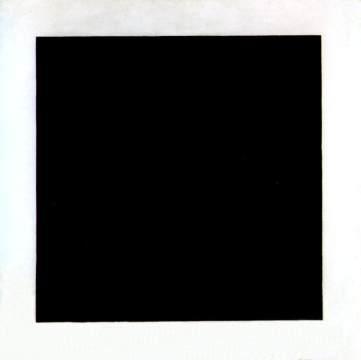


[Images: Storm supercells, photographed by Mike Hollingshead].
Category: BLDGBLOG
Marlboro Motels
According to a recent story in the Observer, Philip Morris, of Marlboro fame, has been redesigning the interiors of British pubs into subliminal, three-dimensional advertisements. That’s right:
“Picture the scene: You walk into a chic bar where the clientele is young and the drinks reassuringly expensive; you note the stylish combinations of red and white furniture, the impressive attention to detail that goes into everything from the cushions to the ashtrays. Suddenly, inexplicably, you urgently want to smoke a Marlboro cigarette.”
Indeed, Philip Morris has “experimented with subliminal ways of communicating its brand, through themed bar areas which could be put up at major social events, and did not feature the Marlboro logo or its packaging. These ‘installations’, as they were called, created lounge areas by placing comfortable red sofas in front of video screens showing scenes redolent of Wild West ‘Marlboro country’ to convey the essence of the cigarette brand while circumnavigating sponsorship bans.”
This is because “cigarette advertising is going underground, it’s becoming more covert.” It’s taking the form of “Marlboro motels,” or chill-out rooms themed in red and white, built to remind you of cigarettes.
Are we inside a building – or an advertisement?

[Image: “Harlequin Sitting on a Red Couch” by Pablo Picasso (1905); quick test: are you reaching for a cigarette…?].
As interior design – architecture itself – becomes fair game in the quest for ever-more-guerilla marketing, let’s just hope we don’t get our signals crossed: instead of smoking Marlboros you start uncontrollably drinking glass after glass of Coke… Or instead of buying a new Burberry suit you suddenly, inexplicably, achingly, urgently, want a new pair of Depends adult diapers… Instead of buying Trojan condoms you buy Tofurky…
Advanced capitalism dissolves in a fog of the wrong purchases.
Tree bombs
Two earlier posts here have strangely merged in real life: while we were off soil-bombing Iceland, MIT’s Moshe Alamaro – of the famed anti-hurricane jet engine barges – was strafing the earth with tree seeds. It’s called “aerial reforestation.”
Back in 1997, Alamaro “designed conical canisters, of a starchy biodegradable material, which each contain a seedling packed in soil and nutrients. The canisters are dropped from a low-flying plane, so that they hit the ground at 200 m.p.h., and imbed themselves in the soil. Then the canisters decompose and the young trees take root. A large aircraft could drop as many as 100,000 saplings in a single flight: Alamaro’s system could plant as many as a million trees in one day.”
Whole forests, fired from F-16s. Stealth forestry.

Or, branching off from an earlier comment on the agri-militaristic possibilities of garden wars (“hotheaded dictators and war-time presidents decide to take turns garden-bombing each other” [see comments]), you’d get forest wars, landscape design by Cruise missile: launched from a ship in the Indian Ocean, soon there are rich deciduous forests in the hills of Afghanistan.

Aspen trees. Precision Seedlings®. Bunker busters dropped into the San Andreas fault, where genetically engineered redwood saplings grow so deep they knit the faultline back together…
Riot police discard their plastic bullets and tear gas canisters to fire baby tulip bulbs; you go home and flowers are growing from your wounds… All scars become gardens…
Or on CNN some morning we see ICBMs arcing out of the mid-Atlantic, submarine crews cheering, the hunt for a truly red October now over: new maple tree saplings have been fired – they are reforesting the eastern Canadian plateau –
Or it’s a threat: disarm – or we will reforest you… Using tree bombs…
Earthquake Body Radio
While I was in Denver last week I picked up a copy of The Myth of Solid Ground by David Ulin. The book covers seismology, California’s self-intersecting jigsaw puzzle of major and minor faultlines, and the imagination of disaster (to paraphrase Mike Davis).

However, it also explores (and, for the most part, debunks, although Ulin seems to do so only reluctantly) earthquake sensitives, or people who experience physical symptoms immediately prior to the onset of a quake. Headaches, back aches, bad dreams, sore joints – the body becomes a warning flag for terrestrial disturbance. The human nervous system, a seismic prediction device.
Kathy Gori, for example, “a Los Angeles sensitive, has run off a string of better than twenty successful predictions – with just a handful of misses – by relying on headaches that come and go a few hours before a quake. The key, Gori believes, is that her brain contains higher-than-average levels of magnetite, the mineral that helps bats and other animals orient themselves to the electromagnetic field of the earth, which enables her to function as a tectonic receiver, as it were.”
A tectonic receiver! Her brain, containing a metallic analogue of the earth’s surface, responds to disturbances in the earth’s surface. The brain as a micro-landscape, metallized and resonating.
Or, more comically, there is the guy “nicknamed ‘Pain-in-the-Butt Man,’ because he feels pain shoot through his ass cheeks before the ground begins to shake.”
There’s also “Charlotte King, the self-styled doyenne of the earthquake sensitives,” who claims that she “has literally been able to hear low-frequency sound waves – a foghornlike moaning she refers to simply as ‘The Sound’ – and, in conjunction with physical symptoms ranging from anxiety and irritability to nosebleeds, muscle spasms, headaches, and severe stomach or heart pain, use them to predict earthquakes and volcanoes with a rate of accuracy that, by her accounting, comes in somewhere around 85 percent.”
(Somewhat related to this, see BLDGBLOG’s recent post on Sound dunes).
On Charlotte King’s website there’s even a definition of something she calls the “Charlotte King effect,” aka “geosensology,” or “the study of senses and biological systems as it relates to geologic dynamics or geologic events.”
This – geosensology – is all part of Project Migraine:
“Through the efforts of Charlotte King who pioneered Biological Earthquake Prediction, and Chris Dodge of the US Library of Congress, a volunteer research project was born – aptly named ‘Project Migraine.’ The focus of this project was to prove, beyond coincidence, that earthquakes and volcanic eruptions could be forecast, prospective of the event, giving time, magnitude, location and probability” – forecast using the human body.
King has mapped seemingly every part of her body to the earth’s surface, limb by continent by island chain: “Upper back as I have repeatedly said is for Japan;” or “Pain in ears, this is usually Italy, Sicily, Greece and Crete.” Her body – and this is not at all something I am endorsing, or implying that I believe – acts as a kind of muscular radio, or nervous antenna, the meat and gristle and bone of being human somehow tuned-in to geoseismic activity.
Earthquake/body/radio.
Ulin’s book then looks at the scientific work of Tony Fraser-Smith, a professor at Stanford University, “who recorded anomalous ultra-low-frequency (ULF) electromagnetic waves in the ground near Corralitos, a small town three miles from the Loma Prieta epicenter.” (Loma Prieta was a large earthquake in 1989).
“‘Twelve days before the earthquake,’ he says, ‘the noise level went up by a factor of ten. Three hours before, it went up by another factor of ten.'”
The faultlines themselves – all crushed rock and slurry – were emitting radio waves.
This apparently legitimate discovery, however, collapes into the New Age weirdness of amateur earthquake prediction with a man called Jack Coles. Just after the Loma Prieta earthquake, “Fraser-Smith accompanied USGS seismologist Andy Michael to Coles’s San Jose apartment, where they found [him] monitoring a symphony of static coming from an elaborate array of radios tuned between stations at the low end of the dial. ‘Clearly,’ Fraser-Smith remembers, ‘he believed in what he was doing. I don’t think he was a charlatan. But every time a radio popped, he’d claim it indicated something, which he’d then interpret according to his criteria that he wouldn’t tell us anything about.'”
BLDGBLOG has already written about radio astronomy; this, I suppose, is radio seismology.
There are people who use clouds to predict earthquakes; there is even Jim Berkland, with his own method of prediction, “which is to read lost and found columns in various California newspapers,” keeping “a daily log of pet disappearances in Los Angeles and the Bay Area, going back twenty-two years.” (His earthquake prediction website can be found here.)
The interest here, at least for me, is not the individual methods these people use, or even whether those methods can be treated as “scientific,” but the basic idea at work behind them: that – through a kind of unintended revival of the medieval Great Chain of Being – the human body, the lived skeleto-muscular present, is actually a terrestrial analogue, a corporeal mappa mundi. The idea that metal in the California hills can also be found in the human brain, thus making the human brain a microcosm or simulacrum of the earth: human anatomy as world model.
Yet it’s also the seemingly disastrous misuse of hermeneutics – reading too far into things – that would lead someone to conclude that missing pet ads in Los Angeles newspapers are harbingers of earthquakes, or that radio static from dead stations hissing and popping outside the usable spectrum is somehow coming from the earth, picking up on planetary reverberations, literally radio-active. Over-literalizing a pun.
The “earth” as a system of signs, meant to be interpreted. The logic behind this.
The logic of earthquake prediction.
(Meanwhile, for those of you dying to use origami as a means to analyze tectonic faulting, click here).
Four-dimensional films
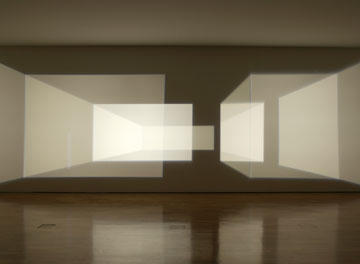




[Images: Space, sequence, light: architecture as a four-dimensional film you can walk through – taken from Reimagine (large version), 2002, by Olafur Eliasson].
Radio Aurora New York
“Powerful radio waves beamed up into the sky have created artificially enhanced auroras visible to the naked eye,” New Scientist reports.

[Image: Jan Curtis – loads of really exceptional photographs here (and that radio tower, above, is just a coincidence).]
“Todd Pedersen from the Air Force Research Laboratory in Massachusetts and Elizabeth Gerken of Cornell University in Ithaca, New York, have created emissions of ‘unprecedented brightness’, using pulses of radio waves sent from a base station in Alaska. ‘The beam is more like a flashlight than a laser,’ says Pedersen. ‘The total power is about the same as large shortwave transmitters like the BBC’s.'”
Now they just need to attach some radio transmitters to the tops of New York’s tallest skyscrapers, and every night the city’s skyline will be bathed in swirling auroras… Crackling wisps of a green and blue – and orange and red and yellow and white – ionized atmosphere will form snakelike rolling arcs and curtains between the mirrored outer walls of bank towers; ships at sea will see a city gone halo’d and prismatic.
The international space station floats over an earth of urban auroras – London, Shanghai, Cairo…
Auroras over the BLDGBLOG editorial offices…
Indeed, auroras coming from the BLDGBLOG editorial offices…
Urban Fossil Value
 [Image: J.M. Gandy, speculations toward the ruins of John Soane’s Bank of England – but, again, how about speculations toward the Bank of England’s fossils…?]
[Image: J.M. Gandy, speculations toward the ruins of John Soane’s Bank of England – but, again, how about speculations toward the Bank of England’s fossils…?]
As Hurricane Rita carves away at the Gulf shore, Galveston burns, buses explode outside Houston, and New Orleans refloods through badly built and incompletely repaired levees, I stumbled upon an old article, from 1998, about fossilized cities.
Millions of years from now, in geographical regions “entombed by tectonic disturbances,” entire cities – “the abandoned foundations, subways, roads and pipelines of our ever more extensive urban stratum” – will actually come to form “future trace fossils.”
These “future trace fossils,” the article says, form easily preserved systems that are “a lot more robust than [fossils] of the dinosaurs. They include roads, houses and foundations.”
And yet, for all that, only those cities “that were rapidly buried by floods or sandstorms” will be “preserved for posterity.”
Los Angeles, for instance, “is on an upward trajectory, pushed by pressure from the adjacent San Andreas Fault system, and is doomed to be eroded away entirely.” But if a city is flooded, buried in sand, or otherwise absorbed downward, “the stage is set to produce ideal pickling jars for cities. The urban strata of Amsterdam, New Orleans, Cairo and Venice could be buried wholesale – providing, that is, they can get over one more hurdle: the destructive power of the sea.”
It is often remarked in architectural circles how megalomaniacal Nazi architect Albert Speer came up with his so-called theory of ruin value, in which he proposed a new Romano-Fascist Berlin designed to look good as a ruin in thousands of years.
But that’s boring – let’s talk about cities fossilizing over millions of years.
Urban fossil value.
The already buried, subterranean undersides of our Tube-hollowed, war-bunkered modern cities “will be hard to obliterate. They will be altered, to be sure, and it is fascinating to speculate about what will happen to our very own addition to nature’s store of rocks and minerals, given a hundred million years, a little heat, some pressure (the weight of a kilometre or two of overlying sediment) and the catalytic, corrosive effect of the underground fluids in which all of these structures will be bathed.”
Who knew, for instance, that plastics, “which are made of long chains of subunits, might behave like some of the long-chain organic molecules in fossil plant twigs and branches, or the collagen in the fossilized skeletons of some marine invertebrates”? Who knew, in other words, that plastics will fossilize?
Indeed, “with a favourable concatenation of tectonics and sea level, our species could leave behind in a geological instant a much more striking record than the dinosaurs left in a hundred million years.”
Space in Hong Kong
Michael Wolf‘s “Architecture of Density” – photos which reward close inspection – from a show at the Robert Koch Gallery:






“[Michael] Wolf was born in Munich, Germany in 1954. He studied first at the North Toronto Collegiate Institute in Canada, then UC Berkeley and, in the mid 1970s, with Otto Steinert at the University of Essen, in Germany. Published monographs include Sitting in China (2002) and China im Wandel (China in Transition) (2001). Hong Kong: Front Door/Back Door will be published by Thames and Hudson in 2005.”
(Found through a link on Archidose; see also BLDGBLOG’s recent posts on Sze Tsung Leong and Space in China.)
Artificial diamonds and the snowflake chamber, pt. 2

Artificial diamonds, we read in Wired, can be “created in a chamber that mimics geologic conditions” – they are manufactured, in other words, inside surrogate earths.
This chamber of geological mimicry is really “an 8,000-pound machine that use[s] hydraulics and electricity to focus increasing amounts of pressure and heat on the core of a sphere.” Such hydraulic pressure recreates “conditions 100 miles below Earth’s surface, where diamonds form. Put a sliver of diamond in the core, inject some carbon, and voilà, a larger diamond will grow around the sliver.”
All of this is done in a “30,000-square-foot factory, located in an industrial park outside Sarasota, Florida.” Here, “a roomful of Russian-designed machines spit[s] out 3-carat roughs 24 hours a day, seven days a week.”
The warehouse is run by a company called Gemesis. Its owner jokes that, add another warehouse or two, and soon he’ll have himself “a proper diamond mine.”
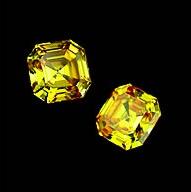
[Image: two yellow diamonds by Gemesis. The diamonds are apparently undetectable as manmade except by the most expensive machinery De Beers can throw at them.]
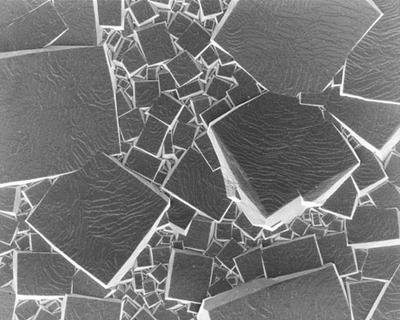
[Image: the inner crystallography of a diamond – looking almost as if “Black Square” by Kazimir Malevich hit the bottle and went to Kinko’s with some time to kill:]
But Gemesis does not have the only – in fact, does not have the best – method for producing artificial diamonds. Apollo Diamond, based in Boston – in “a suburban strip mall occupied by a fitness gym and a graphic design company” – uses a process called chemical vapor deposition, or CVD. CVD “has been used for more than a decade to cover relatively large surfaces with microscopic diamond crystals. The technique transforms carbon into a plasma, which then precipitates onto a substrate as diamond.”
The diamond precipitates, forming “when a plasma cloud rains carbon onto diamond wafers” – but perhaps rain is not the appropriate analogy here.
Using CVD, “diamonds could conceivably be grown in large bricks” – kicking off a whole new realm of architectural possibilities that the Wired article does not otherwise describe: a new diamond-walled Notre-Dame of constant refraction and transparent vaults, precision-cut into spires that would put Gaudí to shame.
But it’s the precipitation that interests me here, especially in the context of snow: “To grow single-crystal diamond using chemical vapor deposition, you must first divine the exact combination of temperature, gas composition, and pressure – a ‘sweet spot’ that results in the formation of a single crystal. Otherwise, innumerable small diamond crystals will rain down” – or snow down, as the case may be.

An artificial earth-chamber that snows diamonds.
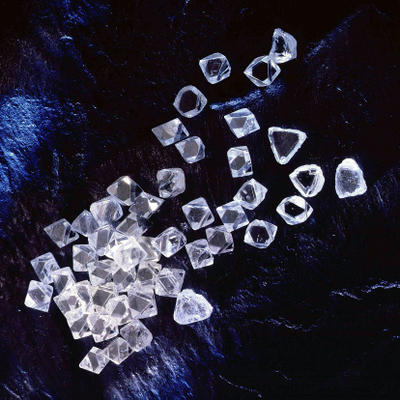
Perhaps, then, BLDGBLOG needs to update its proposal for a snowflake incubation city, and reimagine it as a city that constantly snows diamonds, thousands upon thousands of diamonds, snowing down from the roofs of cathedrals, filling inland canals, blowing through elevator shafts, falling quietly behind glass walls with a light rhythmic tap and rush.
Artificial diamonds and the snowflake chamber, pt. 1
“It’s summer in southern California, and among the palms and lemon trees a man is making snow,” New Scientist writes. “Inside the physics department at Caltech in Pasadena, Kenneth Libbrecht grows tiny, frozen crystals.”

Using these manmade snowflakes, Libbrecht hopes to discover “why no two snowflakes are ever the same shape, and why they form myriad patterns of plates and needles and ferns and elaborate baroque stars.”

This is “the art of growing ice by electricity,” and it “started in 1997 as an aesthetic quest.”

Libbrecht, in fact, has built “a snowflake incubation chamber – a steel cylinder about half a metre across with a few tubes attached. Look through a window in the side, and you can see an embryonic snowflake growing on the end of an ice needle.”

This “incubation chamber” is really a kind of snowflake printer: “Libbrecht can make any of the fantastic natural shapes that fall… If he wants a plain, flat plate or a many-fingered dendrite, he just presses a few buttons, waits a few minutes, and [whoop!] there it is.”

(All quotations from “Designer Snowflakes” in the 23 December 2000 issue of New Scientist. For another article, click here; and for a lecture by Libbrecht in Culver City, CA, home of the Center for Land Use Interpretation, click here. For loads of beautiful snowflake images go here. Finally, for some quite remarkable stereoscopic images of black-and-white, electro-alien high-tech snowflakes click here [the fifth from the top is insane].)
Kenneth Libbrecht, it seems, has some very interesting interests (including helioseismology).
In any case, Ukichiro Nakaya, at Hokkaido University, was also in on the snowflake incubation act – he’s even got a “museum of snow” named after him, apparently designed by Arata Isozaki. (Ken Libbrecht himself took a “snow crystal tour” in 2002, including a stop at the Nakaya museum.)

[Nakaya’s chart of snow crystallography.]
Snowflakes have temperature thresholds, Nakaya realized, highs and lows a baby flake cannot cross: “If the flake teeters back and forth between these two temperatures, it will grow fast then slow, as the arm-growing mechanism turns on and off. The resulting complicated, unpredictable series of branchings eventually becomes a beautiful, classical snowflake.”

In this context, another New Scientist article – “Which kind of snow?” from 23 December 2000 – follows Bill Wergin, at the U.S. Agricultural Research Service, who photographs and catalogs individual snowflakes after “coating them with a thin layer of platinum.”
“The result is fantastically detailed images of snowflakes in their pristine state” – albeit snowflakes in a metallized state, but no matter. (See here for some of his freaky images – and, yes, that is snow.)
Metallized symmetry; elaborate baroque stars; snowflake incubation chambers…
I’m tempted here to propose a new BLDGBLOG project: the snow incubation city. It would be styled after baroque Rome–

– and built entirely of snowflake incubation chambers. Within the marble domes and vaulted corridors, buttressed galleries lined with alcoves, inside the hollow columns of spiral stairs and tunneled foundations beneath gardens and their decaying granite statuary, ringed around the city like the flower warehouses of outer Holland, snow would always fall, in steady curtains or random flakes, filling up the insides of buildings; and you could wake up in the middle of the night and go walking past the windows of locked skyscrapers and abandoned churches, inside of which snow is falling, and you could explore the vast ballrooms and corporate lobbies of a moonlit world, catching wounded hexagons and frozen plates and needles of snow on your shoulders and on the backs of your hands.
(And if you don’t already know it, check out The Snow Show, where Zaha Hadid, Lebbeus Woods, Tadao Ando, even Anish Kapoor, built a city out of ice in Norway – and it’s happening again this year.)
I’m reminded of two things: 1) the movie *Real Genius* (a film bearing the rather embarrassing tagline: “When he gets mad, he doesn’t get even… he gets creative”), because they build a tobogganing run out of artificial ice in the hallways of a Caltech dorm – though I’d hope that BLDGBLOG’s snow city could be at least a little more interesting.
And, 2) I went to a concert once in the Zionskirche, in Zionskirchplatz on the border between Mitte and Prenzlauer Berg in Berlin – this was back in the summer of 2000 – and it was nearly midnight, and a choir was there, but the church hadn’t been maintained so the ceiling, throughout the concert – which was candlelit, and sounded like Arvo Pärt – the ceiling was snowing small white flakes of plaster on the choir as they sang. The inside of the church was snowing on us. The exact mathematical dimensions of angels.
Well – part 2 coming up soon.

[Image: An early snow photograph, by Wilson Bentley.]
Sze Tsung Leong

[Image: Pokfulam, Hong Kong, 2003.]

[Image: People’s Square, Luwan District, Shanghai, 2004.]

[Image: Zuojiazhuang, Chaoyang District, Beijing, 2004.]
All photos by Sze Tsung Leong, whose work I find just really unbelievably great.
